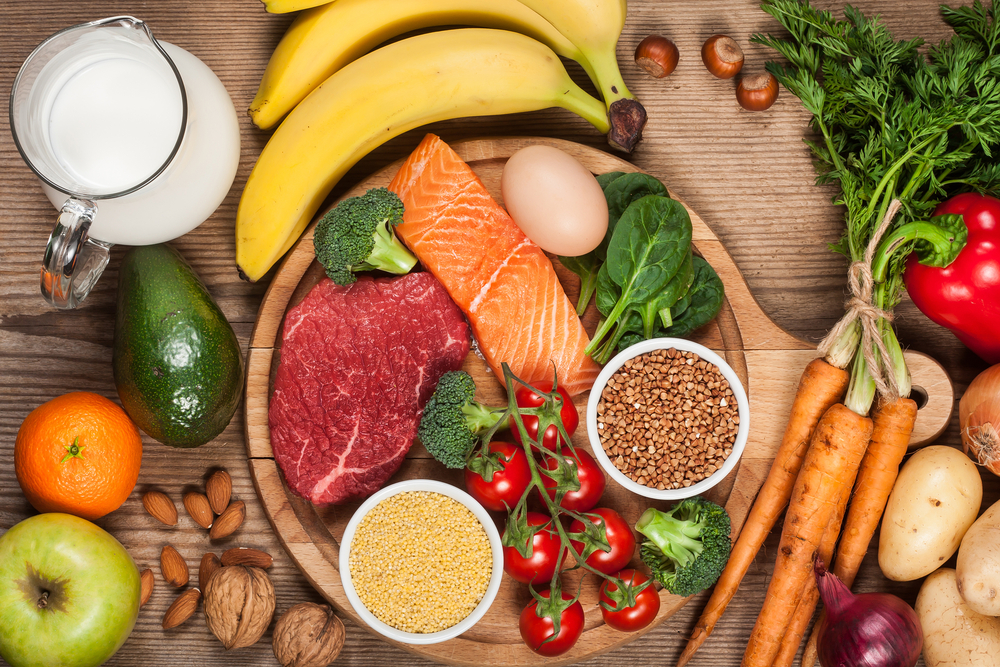Maintaining a Balanced Diet Key for COPD Patients: A Nutritional Specialist’s View

The lungs are one of the most essential yin organs of our lives, and they are extremely fragile. They filter, they distill, they respond, and they act accordingly. They provide the container for the breath — the alchemy that is life. Chronic obstructive pulmonary disease (COPD) aggressively and progressively hijacks the delicate balance that is the relationship between the air we breathe and how that air translates into our quality of life.
From a Western perspective, there is no cure for COPD as it is viewed as a purely respiratory condition. However, from an Eastern perspective, diet and lifestyle greatly influence — and can even cause — a disease due to the signal conditioning by way of meridian — nerve — neuropeptide transmissions between the lung and the large intestine. This 2013 article, published in the Evidenced-based Complementary and Alternative Medicine journal, detailed the connection between these two organs.
A combination of good diet, conscious breathwork, and healthy lifestyle habits can do a lot to influence the symptoms and progression of the disease. Small day-to-day activities that seem innocuous — such as cleaning, gardening, walking along the street, and driving a car — can expose the lungs to particles that further aggravate COPD.
Our first line of defense when talking about health is food. Food is the substance the body most consistently engages with, and it is key for preventive and curative care. As a general rule, it is important to consume foods that provide a substantial amount of energy, as well as a varied diet rich in phytonutrients to prevent further oxidative stress.
In this 2014 study from the European Respiratory Journal, the authors corroborated this guidance by finding that a well-balanced diet is indicated for individuals with COPD, with a focus on increasing the fat percentage of total energy intake to about 45% daily. Due to the high portion of fat, the quality of fat needs to be considered. Fat should be mostly mono- and poly-unsaturated with minimal saturated fats. Hydrogenated fats — “unhealthy” or trans fats, made from oils chemically altered with hydrogen to become solids, and found in many fried foods, margarine, and snacks like cookies, chips and donuts — should be removed entirely.
Protein contributes about 20% of total energy intake from lean animal sources, dairy, and nut butters, and the rest from carbohydrate sources. Together, they provide high fiber and potent micronutrients and antioxidants, including vitamins A, C, D, E, and B12. Add to this carotenoids, flavonoids, curcumins ( turmeric), resveratrol, magnesium, and omega-3 fatty acids.
So, now that we know the components to eat, let’s take a look at what to eat:
- High fiber foods — These foods are important because they help move food through the digestive tract, protect the large intestine, and help stabilize blood sugar levels. Examples include vegetables, fruits, cooked dried peas and beans, whole grain foods, and bran.
- Control sodium in the diet — Eating too much salt can cause the body to retain water, making it harder to breathe. Instead of salt, use herbs and spices to give your food some flavor. The recommended amount of sodium per serving is 300 mg. Be wary of salt substitutes as they may contain harmful ingredients
- Include adequate amounts of calcium and vitamin D — Findings in this 2014 article published in The Lancet suggest that low vitamin D levels in patients with COPD correlate with moderate or severe exacerbations (flares). Making sure that your levels are in normal range will be preventive. Vitamin D is sourced from fatty fish such as salmon, mackerel, and tuna. Taking supplements is also indicated for many, but be sure the supplement is D3 and contains at least 1,000 IU. Calcium can be found in milk products as well as fortified products and most greens such as spinach, broccoli, kale, collard greens, bok choy, and beet greens.
- Avoid foods that contribute to gas and bloating — they can make breathing uncomfortable. Examples include carbonated beverages, and fried, greasy, and heavily spiced foods. Some raw vegetables may also cause bloating or reflux, so cooking cruciferous vegetables — such as onions, broccoli and cauliflower — is appropriate.
- Carotenoids and flavonoids are found in orange vegetables, dark leafy greens, citrus fruits, apples, dark berries, pinto beans, and lentils.
- Include a generous amount of healthy fats such as those found in nuts, eggs, olive oil, avocado, and fatty cold-water fish such as salmon. Plant-based omega-3s can be found in chia seeds, flax, hemp, cauliflower, brussel sprouts, and algal oil ( derived from algae).
- Drink plenty of fluids — Hydration is so important in COPD, especially since breathing difficulties can lead to dehydration. Water can be boring, I know first-hand! So jazzing up water by adding fruits and vegetables as slices or juice. A bit of citrus (lemon, lime, or grapefruit), berries, melon, cucumber, or mint can make a world of difference in getting that 64 oz in per day. Aromatic plants like lavender and chamomile can also be added to water as a taste enhancer, as well as bringing an emotional lift to your day.
The lungs and large intestine serve as the elimination factor for the ecosystem that is our bodies, and they are intricately connected. The higher the quality of products and choices we put into and engage in with our bodies, the greater capacity for health we can achieve.
In another column, I will share breathwork techniques and lifestyle habits to support healthy and vibrant lung and digestive function.
***
 Alana Kessler, MS, RD, CDN, E-RYT, is a registered dietitian, nutritionist, weight management expert, and an accredited member of the CDR (Commission on Dietetic Registration) and the American Dietetic Association. She is also a yoga and meditation teacher, Ayurveda specialist, and the founder of the New York City-based fully integrated mind, body, and spirit urban sanctuary, BE WELL. Alana’s BE WELL ARC System and Method Mapping technique is a holistic multidisciplinary approach to health and wellness that blends Eastern and clinical Western diet and lifestyle support to effect long-lasting behavior change.
Alana Kessler, MS, RD, CDN, E-RYT, is a registered dietitian, nutritionist, weight management expert, and an accredited member of the CDR (Commission on Dietetic Registration) and the American Dietetic Association. She is also a yoga and meditation teacher, Ayurveda specialist, and the founder of the New York City-based fully integrated mind, body, and spirit urban sanctuary, BE WELL. Alana’s BE WELL ARC System and Method Mapping technique is a holistic multidisciplinary approach to health and wellness that blends Eastern and clinical Western diet and lifestyle support to effect long-lasting behavior change.
A graduate of NYU with a BA and MS in clinical nutrition, Alana is dedicated to helping others learn how to nourish themselves, create balance, and understand their true nature through nutrition, yoga, and inner wellness. She leads Yin Yoga workshops and trainings as well as wellness retreats at international locations. Her health, fitness, and lifestyle expertise has been featured in Aaptiv.com, Droz.com, EatThis.com, RD.com, Redbook, WomensHealthmag.com, and Vogue. For more information, visit her website at bewellbyak.com.






